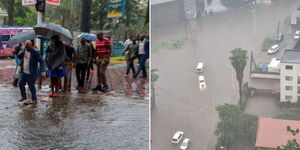Cars need fuel as much as human beings need oxygen. This is why manufacturers fit every unit with a fuel gauge; to tell the driver how much is needed or how much is left.
Once the fuel tank light goes on, it alerts the driver that the amount left in the tank is lower than 10 per cent its capacity hence a need to fill up.
While the LED allows drivers to use the car over a certain distance, to the next available petrol station at least, other drivers opt to push the car to their limits.
Kenyans.co.ke explains the dangers of driving a vehicle with an almost-empty tank:
The most obvious danger is unprecedented stopping whether in traffic or on the highway. Once the signal on, the car is not obliged to warn you that its going to stall.
This not only causes unnecessary embarrassment but attracts extra expenses. For instance, you may need to hire a rider to fetch you fuel from the nearby filling station.
A driver would be required to pay for the rider's transport as well and suffer the anxiety of whether he will return. Stalling in the middle of the road may earn motorists fines, for instance, if the vehicle stalls on the expressway.
In addition, driving on a low tank risks damaging the fuel pump. The pump oscillates in the tank as it performs its function and relied on lubrication from the oil in the tank.
An empty tank causes friction which damages the pump. In addition, the pump may end up clogged with air which has secondary effects along the fuel tract.
In the event that there are air spaces in the tract, a motorist will experience misfiring in the engine. This is the instantaneous loss of engine power while driving.
This is because when the engine is running, fuel from the tank is ignited to produce the energy needed to propel the car. Air cannot be ignited hence the loss of power.
Motorists who drive on very low fuel risk damaging the oil filter. Any impurities in fuel settle at the bottom of the tank, and if drained to the bottom, the filter will have to do more work.
Riding in an empty tank often reduces the life span of the oil filter and if not checked, will allow debris into the engine thus damaging several parts.
Motorists also risk damaging the fuel exhaust system and wearing out other components of the vehicle.












